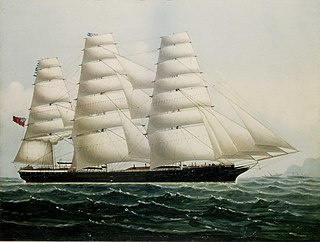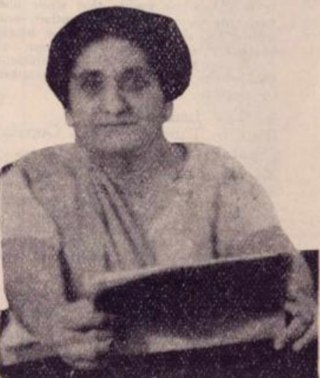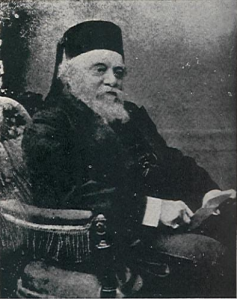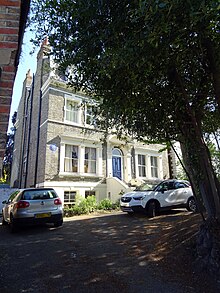
Sir Jamsetjee Jejeebhoy, 1st Baronet,, also spelt Jeejeebhoy or Jeejebhoy, was an Indian-Parsi merchant and philanthropist, later a British knight and baronet. He made a huge fortune in cotton and the opium trade with China.

Darashaw Nosherwan Wadia FRS was a pioneering geologist in India and among the first Indian scientists to work in the Geological Survey of India. He is remembered for his work on the stratigraphy of the Himalayas. He helped establish geological studies and investigations in India, specifically at the Institute of Himalayan Geology, which was renamed in 1976 after him as the Wadia Institute of Himalayan Geology. His textbook on the Geology of India, first published in 1919, continues to be in use.
The Wadia family is a Parsi family from Surat, India currently based in Mumbai, India. The family rose to wealth in the mid-1700s as shipbuilders serving the British East India Company as the latter established its sway over India. During the declining years of the British Raj, Neville Wadia, scion of the main branch of the family, married Dina Jinnah, only child of Muhammad Ali Jinnah, the founder of Pakistan. Despite being the only descendants of the founding father of Pakistan, the family chose to stick to their mills and factories in India rather than emigrate to the new country. They prospered abundantly under Nehru-Gandhi dispensation and today, they run the Wadia Group of companies, one of the larger industrial conglomerates in India.
The Jejeebhoy Baronetcy, of Bombay, is a title in the Baronetage of the United Kingdom. It was created 6 August 1857 for Sir Jamsetjee Jejeebhoy, a prominent Parsee merchant and philanthropist who was the first Parsi and first Indian to be knighted (1842) and the first to be made a baronet (1857). When Sir Jamsetjee Jejeebhoy was made a baronet, it was realised that the Parsee custom was for a change of names for each generation. This conflicted with the British tradition of using consistent surname for a particular baronetcy. In 1915, the Imperial Legislative Council passed the Sir Jamsetjee Jejeebhoy Baronetcy Act, providing that all the male heirs should take these names and no other. Similar provision was made for subsequent Parsee baronets. All holders of the title relinquish their own names and assume that of the first Baronet.

HMS Meeanee was a two-deck 80-gun second rate ship of the line of the Royal Navy, launched on 11 November 1842 at Bombay Dockyard. She was named after the Battle of Meeanee. The Meanee had originally been intended to be named the Madras, and retained the figurehead of a native of Madras, though it no longer appropriate. The head builder at the H.E.I. company dock and shipbuilding yard was Cursetjee Rustomjee. She sailed from Bombay for England in August 1849 with Persian artefacts for the British Museum.
Five ships of the Royal Navy have borne the name HMS Tigris, after the river Tigris, in modern-day Iraq. Another was planned but never completed:

Bombay Dockyard, also known as Naval Dockyard, is an Indian shipbuilding yard at Mumbai. The superintendent of the dockyard is a Naval Officer of the rank Rear Admiral, known as the Admiral Superintendent.
Four ships and one shore establishment of the Royal Navy have borne the name HMS Euphrates, after the Euphrates river. Another three were planned but never completed:

Punjaub was a sail/paddle steamer frigate built for the Indian navy operated by the East India Company.

Manockjee Cursetjee (1808–1887) was a Parsi businessman and judge from Bombay, remembered as a reformer and proponent of female education.

Wadia Movietone was a noted Indian film production company and studio based in Mumbai, established in 1933 by Wadia brothers J. B. H. Wadia and Homi Wadia. It was most known for stunt, fantasy and mythological films, including Hunterwali (1935).
Chance was built in India c.1799. No other data is available on this ship.
Shah Ardaseer was built at Bombay, probably in 1786. English transliterations of her name show her as Shah or Shaw + Adaseer, or Ardaseer, or Ardasier, or Adasier, or Ardasheer, or Ardeseer, or Ardesir. A fire on 13 September 1809 at Bombay burnt her. She then may have been recovered, repaired, and enlarged to become the hulk HMS Arrogant, which was moved to Trincomalee in 1822 and sold there in 1842.
Ardaseer was an opium clipper built at Bombay Dockyard in 1836. A fire on 4 April 1851 destroyed her as she was on a voyage from China to Calcutta via Singapore.
INS Ariadne was a flat-bottomed iron paddle steamer built in England in 1839 for the Indian Navy of the Bombay Government of the British East India Company. She was shipped to India in pieces and assembled at the Bombay Dockyard in 1840. She sailed from India to join the British fleet off Shanghai, China, during the First Opium War but was damaged and later foundered on 23 June 1842.

Bombay Dockyard or formally His Majesty's Indian Dockyard, Bombay was originally a naval facility developed by the East India Company beginning in 1670. It was formally established as a Royal Navy Dockyard in 1811 and base of the East Indies Station when the Department of Admiralty in London took over it. The yard was initially managed by the Navy Board through its Resident Commissioner, Bombay until 1832 when administration of the yard was taken over by the Board of Admiralty.
Several ships have been named Euphrates for the Euphrates River:
Several ships have been named Tigris for the Tigris River:
The H[onourable] C[ompany's] S[hip] Hugh Lindsay was a paddle steamer built in Bombay in 1829 for the naval arm of the British East India Company (EIC) and the first steamship to be built in Bombay. She pioneered the mail route between Suez and Bombay. Hugh Lindsay was lost in the Persian Gulf on 18 August 1865.

Amy Behramjee Hormusjee Jamsetjee Rustomjee was an Indian educator and school principal, based in Bombay. She served as vice president of the International Federation of University Women from 1956 to 1959.











